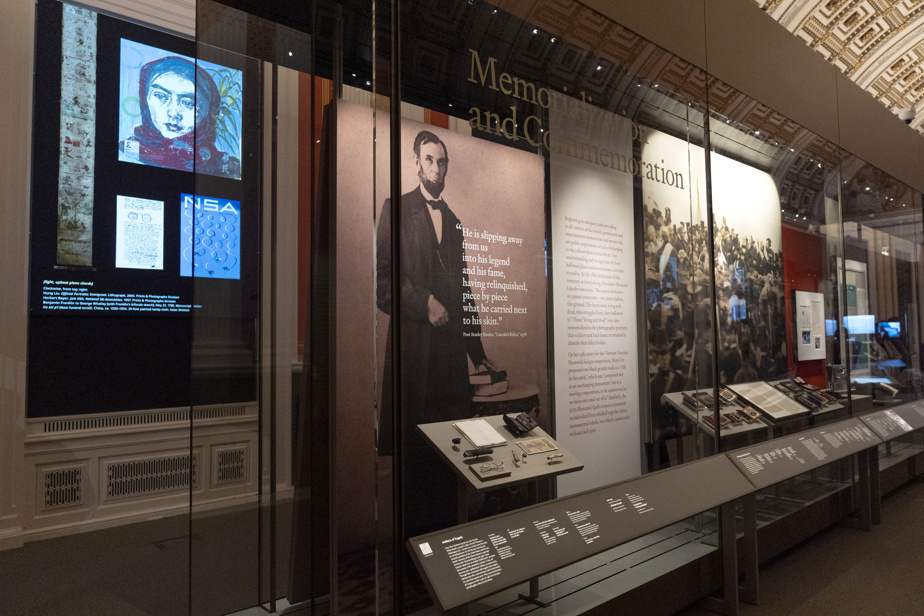(Washington) More than books, the American Library of Congress, the largest in the world, contains millions of objects as diverse as they are symbolic, as illustrated by the exhibition this week of a selection of these “treasures”.
From the contents of Abraham Lincoln’s pockets on the night of his assassination to the first boards of Spiderman, a hundred rare things retracing the history of the United States and beyond are on display from Thursday in the prestigious building located in the heart of Washington.
We can notably see one of the first maps of the newly independent United States, printed in 1784 by Abel Buell, an engraver from Connecticut. Or even photos of the first atomic explosion in the New Mexico desert, under the eyes of the “father” of the bomb, Robert Oppenheimer.
Some of them revealed to the general public for the first time, “these objects are a reflection of our collective history,” says Carla Hayden, president of the institution.
A very small overview, as the collections are immense. The Library founded in 1800 today preserves more than 178 million various items: books, audio documents, photographs, but also articles of all kinds, including numerous musical instruments.
The institution houses the largest collection of flutes in the world, says Carol Lynn Ward Bamford, responsible for their conservation. However, only one is presented in this exhibition, the one, in crystal, which belonged to the former American president James Madison (1751-1836).
This musical instrument is particularly symbolic, because it was saved from the White House, burned by British troops in 1814. Entrusted to the Library by the family of the leader, it was exceptionally taken out of storage in 2022 to be played by American singer Lizzo.
Further on are the belongings of another president, Abraham Lincoln, including his glasses, handkerchief and wallet, recovered from him just after his assassination, during an evening at the theater in April 1865.
“It’s some of the most iconic pieces we feature,” says curator Stephanie Stillo. “There is a whole mythology around Abraham Lincoln today, and these objects make him very human,” she says, pointing to the pair of golden glasses, patched up with a little string.
The 16th President of the United States, who emerged victorious from the Civil War, also carried a 5-dollar bill from the Confederate States, and several newspaper clippings, she continues.
“They were glowing press articles about him, so he always kept them with him,” Ms. Stillo smiles. These clippings, which are not presented to the public for conservation reasons, could be presented in a few months, she explains.
But this mishmash of objects also and above all embodies “the lives of people like you and me” across the centuries, she points out.
From images filmed during a wedding in 1944 to contemporary testimonies of the COVID-19 pandemic, including the story of a Japanese professor who survived the bombing of Hiroshima, the Library questions how to preserve individual and collective memories .
The exhibition thus features a unique family tree: one created over more than 25 years by a woman, Thelma Short Doswell, who died in 2012.
Going back to 1735 and the arrival in the United States of Ama, in a slave ship, the tree, painted on a light canvas, “alone tells an entire part of African-American history”, underlines Ahmed Johnson, curator responsible for the genealogy section. “And it’s the thing I’m most proud of,” he says.




